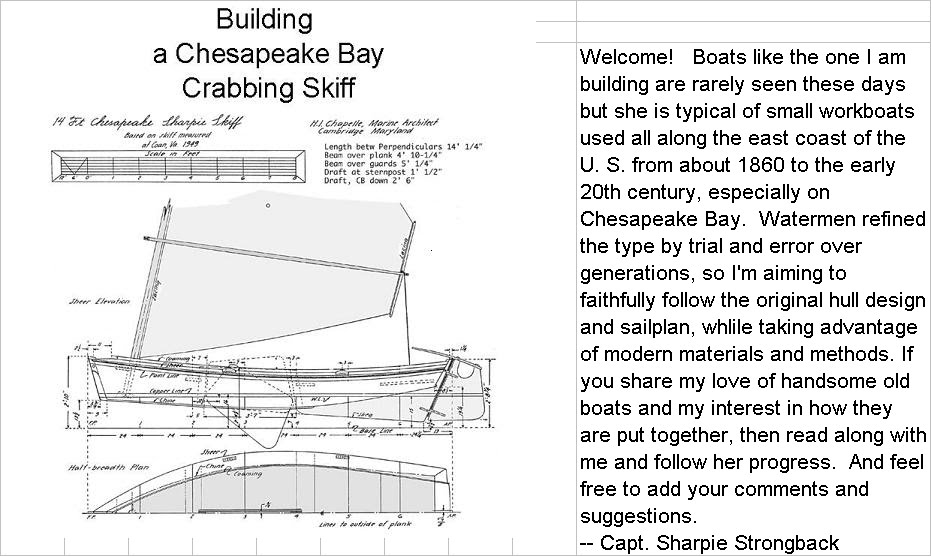Saturday, Oct. 2
I got an early start, by my standards, and was laying up the first polyester fabric by 9:30.
The one previous time I fiberglassed a boat, I used fiberglass cloth and polyester resin, and I made a hash of it. It wouldn't lie flat, and I ended up having to sand a lot of it off. So I was worried about this job.
I started with the inside of the centerboard trunk. I laid strips reaching from the outboard edges of the gripe and down 2" inside the trunk to cover the exposed surfaces of the gripe, bottom, and keelson, and slightly overlapping the insides sides of the actual trunk, which were fabric coated before installation. That little job (like every job) was harder and took longer than I'd expected. It also took much more epoxy to saturate the fabric than I expected, leading me to worry for the rest of the day that I might run out.
Then, knowing that the piece I'd cut out for the port side would not reach the stern, I put down a separate piece covering the transom, side, and bottom at the stern.
Moving to the starboard side, I laid out the precut piece intended to cover the side and bottom, and to reach over both sides of the skeg. The bottom went fine, and the fabric smoothly covered the topside with a little persuasion. But even though the xynole polyester fabric is much more flexible than fiberglass cloth, it absolutely refused to smoothly turn the corner between the bottom and the skeg. So be it. I trimmed off the fabric a couple of inches above the bottom and left the skeg for later- left if for another day, it turned out.
By the time I moved back to the port side I was five hours into it. The day was getting warmer and the epoxy was setting up faster, encouraging me to work faster. And hours of breathing epoxy vapors, even outdoors, probably contributed to my growing anxiety about the job. But I kept at it, repeating to myself that the important thing was to do a good job. If necessary I could run out to the Fiberglass Coatings store for more epoxy, and if necessary I could quit any time.
Just as I finished covering the port side, I ran out of 2:1 catalyst. I wanted to give the whole job a second covering coat of epoxy, so I headed to the fiberglass store. No go- they close at one on Saturdays. Can't fault them for that. But when you're retired, every day is Saturday. Back home, before quitting, I used a razor blade to trim off the semi-hardened fabric along the sheer.
Here's the boat with the fabric covering set in epoxy, about 80% hardened. I still need to cover the skeg, and there will be plenty of sanding, filling and fairing to do, but the main job is accomplished. Not the most enjoyable part of building the boat, but satisfying to have behind me:




















